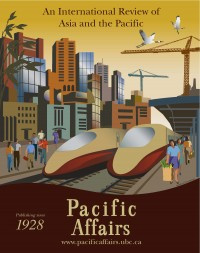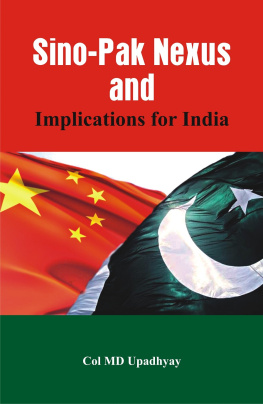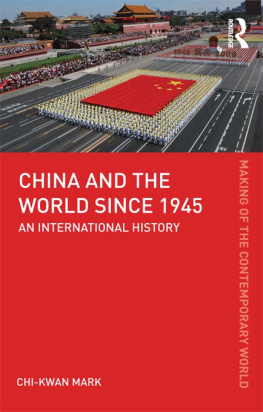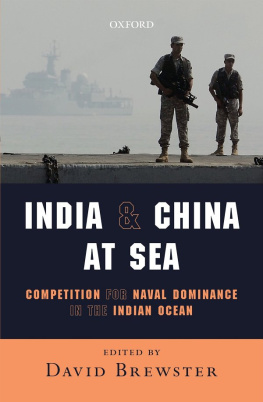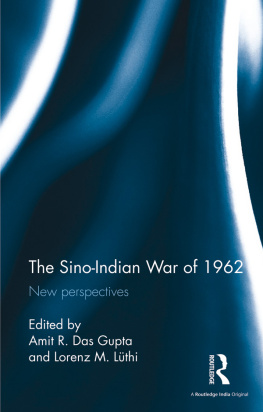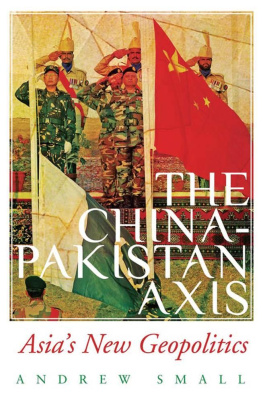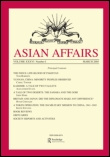HISTORICAL VARIATIONS OF CHINAS FRONTIERS
ANONYMOUS
Pacific Affairs, Vol. 18, No. 4 (Dec., 1945), pp. 346-354
China has been described as the oldest nation that is still a nation. The country ruled by the Shang dynasty in the second mil-lenium B.C. can indeed properly be called "China (though the name itself is of later origin), and there does not seem to be any other modern nation which can trace so much continuity with an organized society of so remote a period. The geographical limits of China, however, have varied greatly in different historical periods, and the changes of frontier are worthy of study, especially in view of the existence at the present day of territories no longer under Chinese rule, but claimed by China, including (apart from territories occupied by the Japanese since 1931 ) Outer Mongolia, Tannu-Tuva and Tibet.
The country now marked on maps as China generally appeared in maps of half a century ago as the Chinese Empire. It was in fact an empire, both in the sense that it was ruled by an emperor and also in the sense that it included territories which were not ethnically Chinese. In addition, though this was not conveyed by the name, the empire itself was not wholly Chinese, for although it had its capital in Peking in an area which had been thoroughly Chinese for three millenia and though it officially used the Chinese language and traditional Chinese forms of administration, the reigning dynasty was of non-Chinese origin and had brought into the inheritance lands which had not belonged to the previous purely Chinese dynasty, the Ming.
The geographers of fifty years ago also generally divided the Chinese Empire into five parts China Proper, consisting of the eighteen provinces south of the Great Wall, and four dependencies or Outer Lands, namely Manchuria, Mongolia, Sinkiang (usually then known as Chinese Turkestan) and Tibet. The division between China Proper and the Outer Lands coincided to a great extent, but not entirely, with two other lines of division that between the regular Chinese system of provincial administration and special forms of controls through Manchu military governors or imperial commissioners, and that between ethnically Chinese and ethnically non-Chinese territory. Of the Outer Lands Manchuria, Mongolia and Tibet were governed separately from the ordinary provincial administrative system, but Sinkiang, after its recovery from rebels in 1878 , was constituted a regular province, though the Chinese were and have remained a minority of the population. On the other hand, Manchuria was preponderantly Chinese in population by the end of the nineteenth century its southern extremity had been ethnically Chinese for over two millenia but was kept administratively separate until 1907 because it was the homeland of the Manchu dynasty, and dynastic policy aimed at preserving the remnant of the Manchu people there from absorption by the Chinese.
With the abolition of the special administrative status of Manchuria in 1907 there ceased to be any formal distinction between Manchuria and China Proper, and further Chinese immigration merely strengthened the already Chinese character of the Eastern Three Provinces (San tung sheng), as the Chinese called them. The Manchus were nearly extinct in the country of their origin, and except for a fringe of Mongol population in the west there was no longer any problem of nationality in the modern sense in Manchuria; had it not been for the Manchu dynastic policy above mentioned which was maintained in form long after it had ceased to correspond to realities Manchuria would probably have already been reckoned a part of China Proper in the nineteenth century. It was different with the other Outer Lands, where the problem was one of dealing with non-Chinese peoples. After the Revolution of 1911 the new Republic endeavored to consolidate Chinese control in these regions both by extending the regular provincial system and by encouraging Chinese peasant colonization which would establish Chinese ethnic preponderance. There had already been a considerable Chinese settlement beyond the Great Wall in Inner Mongolia, and part of Inner Mongolia had been included in the provincial jurisdictions of Chihli (now Hopei) and Shansi. In 1928 all of Inner Mongolia, i.e. Mongolia south of the main belt of the Gobi desert, was organized as the four provinces of Ninghsia, Suiyuan, Chahar and Jehol and were assimilated to the administrative system of China Proper. Two other new provinces, Chinghai and Sikang, were created in the mountainous borderland between China Proper and Tibet. Thus only Outer Mongolia, i.e. Mongolia north of the Gobi, and Tibet were left outside the provincial system of the Chinese Republic. But these were big exceptions, for, though thinly inhabited, they were both geographically of vast size. Both had revolted and achieved de facto independence during the turmoil of the Chinese Revolution, and in neither country so far has Chinese political control been restored, except for a brief interval in Outer Mongolia in 1919 - . The future political status of Outer Mongolia (including Tannu-Tuva which has been detached from it to form a separate unit) and of Tibet remains to be determined after the present war.
If Chinese history is surveyed in retrospect, it will be found that the contemporary situation largely corresponds to what has been normal over the last two thousand years. Of the Outer Lands it is Manchuria which has had the longest and most continuous connection with China of the Chinese; Sinkiang has been held by China intermittently; while Mongolia or at any rate Outer Mongolia and Tibet have only exceptionally come under Chinese rule. Chinese expansion from the Yellow River basin the original China of Shang and Chou times has been north-east towards the Sungari and the Yalu and north-west towards the Tien-shan and the Pamirs, leaving aside the arid steppes of Mongolia and the high mountain plateau of Tibet. Nor must it be forgotten that there was also a southward expansion from the Yellow River which only completed the formation of China Proper in comparatively recent times; for many centuries after the Yellow Sea littoral of Manchuria had been closely settled by the Chinese there was very little Chinese population south of the Yangtse valley.
Both the southward and north-eastward expansions of China may be regarded as natural extensions of the Chinese ethnic area in that both South China and Manchuria were territories for the most part suitable for Chinese agricultural settlement, easily accessible from the original Chinese homeland and only sparsely inhabited by relatively primitive tribes. If South China had by the nineteenth century become an integral part of China (in spite of substantial remnants of non-Chinese population in Szechwan, Yunnan, Kweichow and Kwangsi), while Manchuria remained formally separate, it was because Manchuria produced the warlike Manchu tribal confederacy which gave China its last imperial dynasty, whereas none of the native tribes of South China were able to maintain a large-scale political power after the collapse of the Nan Chao kingdom in the th century A.D.
The Chinese north-westerly expansion to what is now Sinkiang differed in kind from the colonial advances into South China and Manchuria. As far as the Kansu panhandle it was similar for there was good agricultural land along the northern edge of the Nanshan and communications with the main area of the Yellow River basin were not too bad. But beyond Anhsi a stretch of waterless desert separated, and still separates, Kansu from the Hami oasis and the Tarim basin; moreover, these lands beyond the desert, though comprising tracts of fertile and well-watered soil round the margins of the desert, were already occupied by civilized, agricultural communities, whose affinities were not with China, but with India and Iran. There was, therefore, no chance for an easy natural spread of Chinese colonization into Sinkiang. Chinese ascendancy there, in so far as it has been maintained, has always been a matter of high governmental policy and has only been obtained at the cost of great effort. The expansion has in the past had a twofold purpose. In the first place there has been the aim of controlling as far as possible the important caravan routes the old Silk Roadrunning through the Tarim Basin and giving China overland communication with India, Western Asia and even Europe; the traffic of these routes was far too profitable to be left to the monopolies of petty middlemen if Chinas power enabled her to arrange matters otherwise. Secondly there was the strategic-political motive of checking the nomad tribes of Mongolia and their menace to China by outflanking them to the west and at the same time preventing them from increasing their strength by themselves gaining dominion over the Tarim basin and its commerce.

